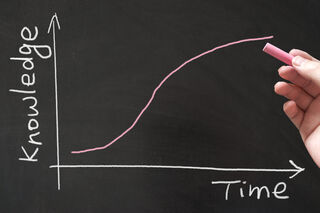Memory
How to Rid Your Life of Clutter
Leverage the forgetting curve and spacing effect to de-clutter effortlessly.
Posted April 28, 2021 Reviewed by Gary Drevitch
Key points
- Neuroscience research has found that too much clutter reduces productivity.
- Getting rid of possessions can be incredibly difficult for some people.
- The Forgetting Curve and Spacing Effect, applied in reverse, facilitate de-cluttering.

Hermann Ebbinghaus isn’t exactly a household name. But it should be. Ebbinghaus’s research explains why “out of sight, out of mind” is a truism. He did pioneering research in the field of memory in the late 1800s that bears out to this day and is known for his discovery of the Forgetting Curve, the Spacing Effect, and the Learning Curve. Ebbinghaus’s findings relate primarily to memory recall and optimizing it. But they also hold the key to leveraging the brain’s forgetfulness to more easily let go of clutter.
One of the biggest barriers to decluttering is that the very act itself involves too much remembering — remembering an item’s usefulness, remembering its value, remembering its sentiment. The more someone remembers an item’s importance, the more difficult it is to let go. The trick to easily letting go of more clutter lies in reverse-engineering Ebbinghaus’s findings.
How the Forgetting Cure and Spacing Effect Work
Let's start with Ebbinghaus’s research: In 1885, he published Memory: A Contribution to Experimental Psychology, from a limited study he did on himself. He hypothesized that the speed of forgetting depends on a number of factors, such as how important something is, its representation, and physiological factors. He concluded that the difference between individuals’ memories could be partially eliminated through training in mnemonic techniques (e.g., i before e except after c...) and spaced repetition based on active recall (e.g., not just seeing something but actively recalling it).
This is fantastic news for someone who wants to study for a test or a big presentation at work. But it’s terrible news for someone who wants to forget something exists (e.g., that slightly itchy and very pricy sweater in the closet). The very act of decluttering — going through possessions to get rid of them — is essentially a perfect active recall exercise.
Why Remembering Impacts De-Cluttering
Take the itchy sweater example. Someone sees and ignores it in the closet daily for obvious reasons. When de-cluttering the closet, the itchy sweater is taken out and examined. In doing so, touching and feeling it, said someone realizes it’s not that itchy and perhaps they just need the right undergarment. They remember that the sweater was expensive and could go with their new navy pants. In that instance, they’ve recalled the reasons the sweater exists in their world. They put the itchy sweater back in the closet, where it remains untouched.
Most organizers de-cluttering with clients cajole them to let go of these itchy sweaters and their ilk. But seeing, touching, and actively recalling a possession means that clients miss it more afterward than if it had been consumed by fire without warning. Also, not everyone wants or can afford to hire someone to de-clutter. Nine times out of ten, the itchy sweaters remain and accumulate, making people and their homes less productive and more stressed.
In 2011, researchers using fMRI (functional magnetic resonance imaging) at the Princeton Neuroscience Institute found de-cluttering the home and work environment increased people’s ability to focus and process information, as well as productivity.

Using the Forgetting Curve and Spacing Effect to De-clutter
The trick to reverse-engineering Ebbinghaus’s memory recall advice is to eliminate the active recall exercise at the moment of disposal. In layman’s terms, when de-cluttering, don’t throw things out right after sorting them.
Get several opaque boxes, go through each room of the house, and put anything not regularly used, needed, or loved in them. If something is on the fence, throw it in there. These boxes are not necessarily ever leaving the premises. Store the boxes in an attic, dry basement, or storage unit—anywhere that isn’t part of daily life. Schedule a time to do a memory exercise with these boxes in 6-plus months' time.
When this day arrives, without opening a single box, sit down and write out what is in the boxes that is missed and keep everything on that list. If it’s a long list, by all means, retrieve everything on it. But it’ll likely be a shortlist because 6-plus months have passed without the repetition of seeing any of these items. They’re not in living areas but in opaque boxes out of sight. In addition, there’s been no recent active recall — no active decluttering. Therefore, there's less remembering.
Making De-Cluttering Effortless
To make this method effortless going forward, keep a box in the house for this purpose. Call it a Donation Bin or a Later Box. Feed it with clutter throughout the year until it fills up. Close it up. Store it. Schedule a memory list exercise 6-plus months out. Put out a fresh empty box. Eventually, de-cluttering becomes as effortless as putting household trash into a garbage bin.
References
McMains S, Kastner S. Interactions of top-down and bottom-up mechanisms in human visual cortex. J Neurosci. 2011 Jan 12;31(2):587-97. doi: 10.1523/JNEUROSCI.3766-10.2011. PMID: 21228167; PMCID: PMC3072218.


